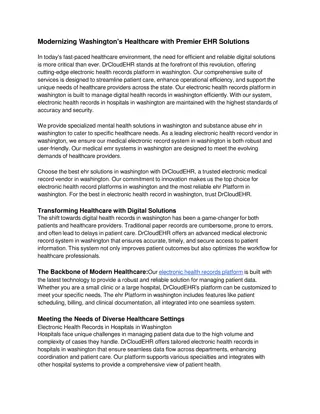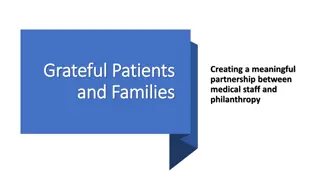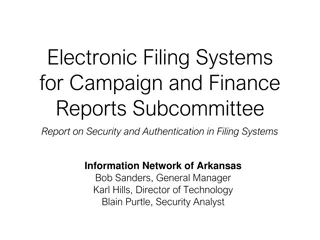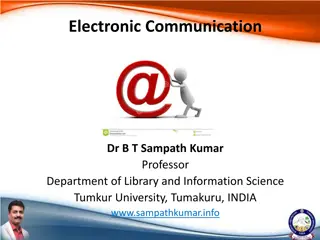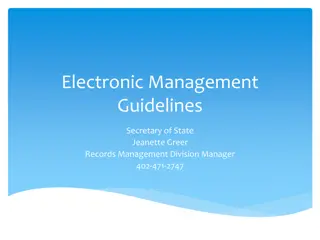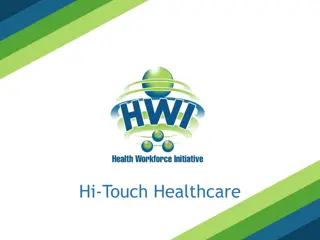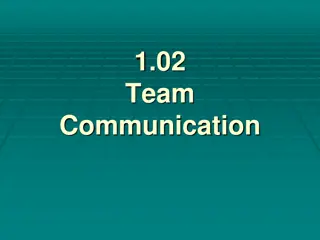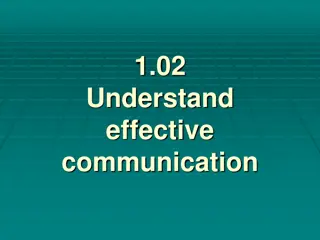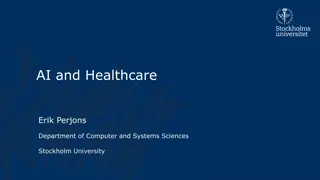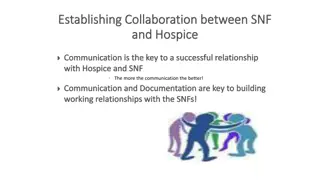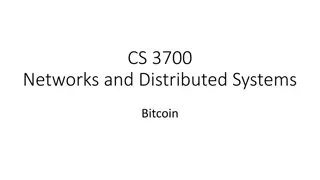Evolution of Electronic Communication in Healthcare
Communication in healthcare has transformed significantly with the emergence of electronic communication tools. Patients can access health information online, healthcare providers can interact with patients and colleagues through email consultations, and individuals can manage their health remotely, leading to optimized care delivery and improved patient outcomes.
Download Presentation

Please find below an Image/Link to download the presentation.
The content on the website is provided AS IS for your information and personal use only. It may not be sold, licensed, or shared on other websites without obtaining consent from the author.If you encounter any issues during the download, it is possible that the publisher has removed the file from their server.
You are allowed to download the files provided on this website for personal or commercial use, subject to the condition that they are used lawfully. All files are the property of their respective owners.
The content on the website is provided AS IS for your information and personal use only. It may not be sold, licensed, or shared on other websites without obtaining consent from the author.
E N D
Presentation Transcript
ELECTRONIC COMMUNICATION IN HEALTH CARE Done by assistant lecturer: Zahraa Abdul-Ghani
Overview Communication processes in health care have undergone dramatic changes through communication. Patients have increased access to health information on Internet sites even though they may lack the ability to judge the quality of the information obtained. Health care providers have access to information through online reference Clinicians can access patient records and lab test results as well as place orders electronically in health systems with integrated electronic medical records. Providers can communicate directly with patients and provide individualized patient care through e-mail consultations. Finally, providers can consult with other health professionals who are caring for a patient or can seek specialty consults through use of electronic communication. use of electronic means of
CASE STUDY 13.1 AN E-MAIL HEALTH CARE STORY Mr. Samuels flies across the country to start a new job. He has already chosen a medical practice in his new town because it has the same online health support service as his previous doctor, even though it is a different medical plan. He can set up appointments, get prescription refills and lab results, e-mail the doctor or nurses, and manage his personal health history. He develops fever and muscle aches a week after he arrives. Fearing that he may have anthrax or smallpox, he e-mails his new doctor a list of his symptoms, along with his itinerary over the previous 14 days. The doctor s automatic system immediately matches his itinerary against the public health database of anthrax and smallpox occurrences and runs his symptoms against his own personal health record, including his medications. It sends an urgent alert to the doctor, who sees no likely source of exposure for Mr. Samuels but spots a potential drug drug interaction. She calls him and tells him that the new drug he just started could have caused an adverse reaction. She feels confident that he does not need to come in for tests or take unnecessary antibiotics. Instead, she changes his medication and asks him to e-mail her in 24 hours. The next day, his e-mail message confirms that his fever and aches are gone.
Continue. Unnecessary authorities, anxiety for Mr. Samuels and his family, and an unneeded antibiotic are all avoided. This nonevent is the happiest of all endings for Mr. Samuels, his doctor, and the health of the public. lab tests, investigation by public health
Use of the Internet A 2005 study found that 68% of American adults use the Internet, which was up from 63% one year earlier. The 2005 survey found that 79% of Internet users have searched online for health information, with 40% of those specifically seeking information on prescription medications. This was a statistically significant increase over the 34% found to access medication information in 2002. In spite of widespread use of the Internet to access information on medications, only 4% reported in 2005 that they had purchased prescription medications via the Internet and 62% saw such a practice to be less safe than getting medications from a pharmacy. or over-the-counter (OTC)
Use of E-mail in Society The e-mail has grown into the single most common use of the Internet. While the majority of e-mail is asynchronous, instant messaging (IM) and short messaging service (SMS) allow for real-time exchanges. However, IM and SMS lack interoperability between competing systems and are currently less secure than some forms of e-mail exchange. The personal computer is still the major originator and receiver of e-mails in the United States, but there are now many options such as pagers, and telephones.
Some of their health care expectations and behaviors are summarized by Cascardo. These patients: Are very involved in their health and well-being Assume their physicians are using the latest diagnostic and treatment tools Expect attention and will not tolerate being rushed through a visit Bring detailed notes with them Research their symptoms and have questions Know or demand to know their options Expect expanded hours to accommodate their schedules Expect continual online availability
PatientProvider Use of Electronic Communication The provision of clinical consultation services by e-mail has been controversial. And charging the consumer directly for a health care consultation by web/e-mail has been part of e- health almost from the beginning (e.g., WebMD.com). Governmental organizations, regulators, and organized health care became alarmed at the misuse of the system by unknown practitioners diagnosing and unknown patients. Medem (www.medem.com) is one example of organized medicine constructing an Internet consultation platform. It promotes itself as the communications network, designed to facilitate online access to information and care for more than 90,000 physicians, their practices, and their patients, while saving patients time and money and helping physicians generate revenue. prescribing treatments for premier physician patient
E-mail communication between providers and patients, but as yet, use of e-mail in clinical care has been sporadic. A multitude of general online consultation services exist, 90% of adults who use the Internet want to exchange e-mails with their physicians. The four activities most desired by patients are: (1) asking questions when a visit is not necessary, (2) making appointments, (3) renewing prescriptions, (4) receiving medical test results. has the potential to profoundly affect the
Continue A recent study of pharmacy patient preferences indicated that waiting to talk to the pharmacist face to face was undesirable for a number of reasons, including: 1. the patient felt too ill or tired after their physician visit, 2. the lack of privacy in the pharmacy discouraged communication with the pharmacist. Individual pharmacy e-mail use in daily practice is not well documented. A survey by WebMD pharmacists reported that 22% of retail pharmacists communicate with other professionals by patients/customers. of community and chain e-mail and 10% with their
Continue. The potential currently use of health care professionals to communicate with patients and monitor their response to therapy electronically, this is rarely seen in practice. The factors commonly cited that limit e-mail use with patients are: (1) providers prefer face-to-face communication, (2) there is a lack of reimbursement for e-mail communication, (3) privacy/security concerns, and (4) the potential increase in workload associated with using e-mail
The important barriers to use of the Internet by providers in patient care these barriers are: 1/Reimbursement barriers 2/ Digital divide barriers
REIMBURSEMENT BARRIERS An important barrier to use of the Internet by providers in patient care has been the lack of a reimbursement structure. The magic key to reimbursement is to have approval for Medicare payment.
DIGITAL DIVIDE BARRIERS Another communication in patient care is the fact that Internet use and e-mail adoption are not uniform across the entire population; this has been dubbed the digital divide. The digital divide is often characterized in :age, racial, ethnic, socio-economic, and disability terms. The highest Internet usage rates are found among those who are younger, richer, and have more years of formal education. Only 22% of those 70 and over go online as compared to 84% of those 18 29 . The digital divide not only separates those who have never used the Internet from those who have, but also those who have access to broadband connections and those who do not . important barrier to the use of electronic
Continue. Not surprisingly, those with lower socio-economic status were less likely to have access to high-speed connections. Education level was also related. Only 29% of those who had not graduated from high school had access to broadband as compared to 61% of high school graduates and 89% of college graduates . Also those with a disability are less likely to have Internet access. This is important because those individuals over the age of 60 have one or more disabilities in the area of vision, hearing, typing, and motor control that could potentially interfere with the use of e-mail. Twice as many disabled reported that the Internet significantly increased the quality of their lives compared to nondisabled individuals. Finally, just because someone has access to the Internet does not mean they can read and information. Most websites continue to provide information at levels that would exclude significant numbers of the general population from understanding the information because of low health literacy. comprehend the written
Inter-professional Use of Electronic Communication Electronic means of communication resulting in startling changes in the delivery of health care. Many providers are using e-mail to better coordinate care of individual patients. Unfortunately, use of e-mail among providers related to the care of a patient has the same privacy and system security concerns and risks of HIPAA (Health Insurance Portability and Accountability Act of 1996) violations as does use of e-mail between providers and patients. If you send or receive patient information to anyone via your computer, either with computer-generated fax or e-mail, you are required to be HIPAA compliant. Computerized Physician Order Entry (CPOE) along with Clinical Decision is designed to reduce medication errors by providing prescribers with a menu of drugs and default dosages from which to pick. Such a system can reduce certain types of medication errors such as those caused by the illegibility of handwritten orders, similarity of drug names, and misspecification of dose. They can also improve patient safety by information on patient allergies, concurrent medications, and lab results at the time an order is written. providing readily accessible
Patient Privacy and System Security Issues Information privacy and security are contentious issues throughout the whole of society. The Internet has brought into focus the fact that information (data) about individuals is a very valuable commodity and vulnerable to theft. In marketing terms, the ability to target individuals with tailored messages at the correct moment by the right method is worth billions of dollars. In addition, consumers want the personalization, but only on their own terms and under their control, which increases the cost of obtaining and manipulating the information on individuals. This dynamic tension between the individual s control of his or her own information is behind the genesis and implementation of HIPAA. The privacy regulations included in HIPAA regarding how health care is going to use and protect personal health information (PHI) have gotten a great deal of attention in all aspects of health care. The basic principles of the HIPAA privacy section reflect ethical principles that involve asking permission about use of personal information, limiting data access to only those need to know, and providing patient records for review and comment. The patient s e-mail address is considered part of their PHI and is subject to the same protections as his or her name, mailing address, and phone number.
Establishing Pharmaceutical Care Services Using Electronic Communication Precautions to consider in establishing pharmaceutical care services that use e-mail for communication include: 1. E-mail cannot be used in the case of urgent or time-sensitive communication. Patients who e-mail a pharmacist for advice must instructed beforehand on when they should escalate to phone calls to the pharmacist, physicians, visits to their physicians, or calling 911. phone calls to their 2. E-mail messages containing PHI of patients require password protection for computers, encryption, and authentication in transmission of patient information.
Continue.. 3. E-mail consults with patients should occur in the context of therapeutic relationships that have been established with in- person contact. 4. E-mail communication with patients or providers becomes part of a patient s permanent medical record and, in pharmacy practice, patient medication profile. 5. Patients should provide written informed consent to use of e- mail in pharmacist patient communication. 6. Never forward patient-identifiable information or e-mail addresses to a third party, even a family member, without a patient s written permission.
Ch14/Ethical Behavior when Communicating with Patients Ethical Patient Care: The following case illustrate several principles of ethical behavior. CASE STUDY 14.1: Ms. Edwards is starting on a new medication for schizophrenia. The drug has a number of side effects, some of which can be serious. She asks you several questions about the purpose of the medication and possible side effects. When you ask her what her physician told her about the medication, she reports that he said, I ve got a lot of patients on this drug and they re doing fine. It is obvious to you that she is unclear about the purpose of the medication or any possible problems. You are concerned that Ms. Edwards may refuse to take the drug if told about possible side effects. What would you say to Ms. Edwards?
It is obvious that Ms. Edwards does not understand the purpose of drug treatment nor the medication s possible side effects. Thus, it could be not actually given informed consent to treatment. Advices against providing information may increase fears that Ms. Edwards may not take the medication she needs to treat her medical condition if she is aware of the side effects. The principle raised in this case is beneficence doing something that you decide is in her best interest. Other arguments against informing Ms. Edwards may focus on the physician, on the belief that it is the physician s responsibility to inform patients, or on the physician s right to choose not to provide her with certain information about her treatment. Other arguments may focus on your fears about antagonizing physicians by acting contrary to their wishes. The principle of self-rule and the right of the patient to determine what will be done to her body argues in favor of you providing information about the medication, including its purpose and side effects. You may need to call Ms. Edwards physician to gather further information pertinent to her treatment or to consult with the physician on how informed consent should take place..
Nevertheless, Ms. Edwards has the right to this information and must be informed before she begins taking the medication. This case highlights the potential conflict of interest facing you in which self-interest to others (e.g., physicians) are allowed to override the interests of your patients. Although the principles of beneficence and autonomy may be in conflict in this case, the right of self-determination by the patient is so important as to be principal. Ms. Edwards has the right to information regardless of whether that information would affect her decision to initiate treatment about her medication,
A Pharmacy Code of Conduct for a Modern World The emerging role of pharmacists as medication therapy managers requires you to be more effective and efficient when engaging in all forms of communication as it relates to medications .Pharmacists can be fulfilled of the fact that the World Health Organization (WHO) has approve importance as communicators and health care givers. Thus, you must be prepared to carefully recognize and resolve ethical issues by understanding general and specific ethical principles and by applying these principles to pharmaceutical care and medication therapy management. their
THE PHARMACISTS CODE OF ETHICS The APhA adopted a revised Code of Ethics for Pharmacists in 1994; the American Society of Health-System Pharmacists (ASHP) endorsed the same code in 1996. This code was founded using a patient-centered approach and principles are based on moral obligations and virtues intended to guide pharmacists in their professional relationships with patients and other health care professionals (APhA, 1994). This pharmacist-specific Code of Ethics addresses only ethical behavior and does not address any of the state and federal statutes and regulations governing pharmacy practice although both state and federal statutes and regulations address how pharmacists are to conduct designed to respect and protect the well-being of the public. themselves in relationships
The eight principles described in the APhA Code of Ethics for Pharmacists are as follows: Principle I: A pharmacist respects the covenantal relationship between the patient and pharmacist. Principle II: A pharmacist promotes the good of every patient in a caring, compassionate, and confidential manner. Principle III: A pharmacist respects the autonomy and dignity of each patient. Principle IV: A pharmacist acts with honesty and integrity in professional relationships. Principle V: A pharmacist maintains professional competence. Principle VI: A pharmacist respects the values and abilities of colleagues and other health professionals. Principle VII: A pharmacist serves individual community and societal needs. Principle VIII: A pharmacist seeks justice in the distribution of health resources. While these principles outline the professional obligation of pharmacists to use their knowledge and skills for the benefit of others, they reflect general and ethical principles held in high esteem by all health care professionals. More importantly, the APhA Code was built on a contemporary interpretation of underlying ethical principles that address paternalism, autonomy, honesty and confidentiality, and fidelity. These underlying principles are something that every pharmacist should understand. nonmaleficence, telling, beneficence, consent, truth informed
Seven Key Principles Guiding Ethical Conduct Underlying Ethical Principles 1 Non maleficence 2 Beneficence 3 Autonomy versus paternalism 4 Honesty and truth telling 5 Informed consent 6 Confidentiality 7 Fidelity
1. The principle of nonmaleficence The principle of nonmaleficence is commonly stated as the principle of above all else do no harm. The principle of nonmaleficence requires a health care provider to not act in any way that intentionally inflicts needless harm or injury to a patient, either through acts of commission nonmaleficence can be violated in two distinct ways. First, pharmacists can violate this principle if they knowingly and intentionally cause a patient harm. For example, knowingly filling a prescription to which a patient has an allergy or filling a prescription in defiance of the published literature that states it may have a drug food interaction without telling the patient about the drug food interaction may be seen as malfeasance. The principle of nonmaleficence may also be violated when no malice or intent to do harm is involved. For example, a pharmacist by honest mistake misreads a prescription for Zyrtec and fills it with Zyprexa. Should that patient come to harm through this error, the pharmacist may be found negligent in his or her actions even though the pharmacist had no intention to cause harm. The pharmacist may be considered as having failed to exercise due care in discharging his or her responsibilities as a professional. Thus, the pharmacist failed to meet his or her obligation of nonmaleficence and may be held accountable by the court system for his or her actions. or omission .The principle of
2. THE PRINCIPLE OF BENEFICENCE Both principles require the health care provider to evaluate the potential benefits of an intervention in relation to the risk of harm to the patient. To be more specific, beneficence is professionals should behave in the best interest of their patients. The principle of beneficence is also addressed I the APhA Code of Ethics for Pharmacists (APhA, 1994) when it states, a pharmacist places concern for the well-being of the patient at the center of professional practice. the principle that health
When considering a medical or pharmaceutical intervention that best benefits the patient, that intervention should answer some or all of the following seven questions: Does it promote health and prevent disease? Does it relieve symptoms, pain, and suffering? Does it cure the disease? Will it prevent untimely death? Will it improve functional status or maintain a compromised health state? Will its educational content and counseling help better a patient s condition and prognosis? Will the intervention help avoid harm to the patient in the course of care?
3. THE PRINCIPLE OF AUTONOMY VERSUS PATERNALISM Another ethical issue in health care is based on finding a balance between autonomy and paternalism in order to provide the best help to the patient. Paternalism refers to those health professionals or pharmacists who see their paternalistic. That is, they see themselves in a parental role knowing what is best for the child (patient). In essence, paternalism is a poor practice as it fails to take into consideration the preferences, beliefs, and practices of the patient, especially those that could be of most benefit to them. Conversely, the principle of autonomy establishes a patient s rights to self- determination; that is, the patient s moral right to choose one s own life plan and action .This right is considered paramount even if health professionals judge patient decisions as being damaging to their health. According to the Harm Principle, limits on an individual s free choices are ethically allowable only when an individual s preference interfere with on the rights and safety of others relationships with patients as
4. The principle of honesty and truth telling On principle, all communications between patients and their health professionals should be truthful under all instances. But what should be done when full disclosure of every detail could prove to be harmful? With the increased prominence of the principle of autonomy and with the patient s right to informed consent in these modern times, full disclosure and truthfulness have become the more accepted ethical courses of action
5. The principle of informed consent Informed consent is a critical element of any theory that gives weight to autonomy . Thus, informed consent is the way in which patient preferences become expressed and are applied out of respect for that patient s autonomy . The informed consent principle states that patients have the right to full admission of all relevant aspects of care and must give considered consent to treatment based on usable information and a clear understanding of that information. In general, consent is not required when a procedure is simple and the risks are commonly understood .However, any provider who recommends treatment for a patient, especially if it is invasive, must obtain informed consent. For informed consent to successfully take place, it requires a dialogue between patient and provider that consists of five distinct components :
Diagnosis or nature of the specific condition that requires treatment(s), The purpose and distinct nature of the treatment(s), Risks and potential complications associated with the proposed treatment(s), All reasonable alternative treatment(s) or procedures and a discussion of their relative risks and benefits including the option of taking no action, and The probability of success of the proposed treatment(s).
6. The principle of confidentiality The Hippocratic Oath states, what I may see or hear in or outside the course of treatment . . . which on no account must be spread abroad, I will keep to myself, holding such things shameful to speak about. The principle of confidentiality serves to ensure that health care providers are obligated information that is obtained from patients during the course of medical treatment and to take reasonable precautions to protect that information. In another approach to confidentiality modern medical ethics bases this duty on respect for the autonomy of the patient, on the loyalty owed by the physician, and on the possibility that disregard of confidentiality would discourage patients from revealing useful diagnostic information and encourage others to use medical information to exploit patients to refrain from divulging
7. The principle of fidelity and the patientprovider relationship The principle of fidelity, as it relates to the patient provider relationship, is based on the concept of loyalty. It is understood that a special type of relationship is created between patient and provider, one that is based on all the ethical principles previously discussed. Fidelity or loyalty is then even more clearly defined as a sustained commitment to the welfare of persons or to the success of an endeavor, requiring an investment of effort and sometimes even a subordination of self-interest .
How Pharmacists Can Resolve Ethical Dilemmas Steps in Ethical Decision-Making 1. Recognize the ethical dimensions. 2. Identify all stakeholders and interested parties. 3. Think through the shared values or principles involved. 4. Weigh the benefits and burdens. 5. Look for analogous cases. 6. Discuss the case with relevant parties and gather opinions. 7. Consider the legal and organizational rules involved. 8. Reflect on how comfortable you are with the decision.
Communication Skills and Interprofessional Collaboration ThisCommunication Skills and Interprofessional Collaborations focuses on enhancing collaborative relationships between pharmacists and other health care providers in order to ensure better patient outcomes. It will describes the value of establishing collaborative relationships as a means to improving medication therapy management. The barriers and facilitators to developing these relationships are described along with practical examples of effective strategies. The importance of building trust is highlighted, as well as the impact of using effective communication skills to strengthen trusting relationships. Finally, essential steps and behaviors to building collaborative relationships.















